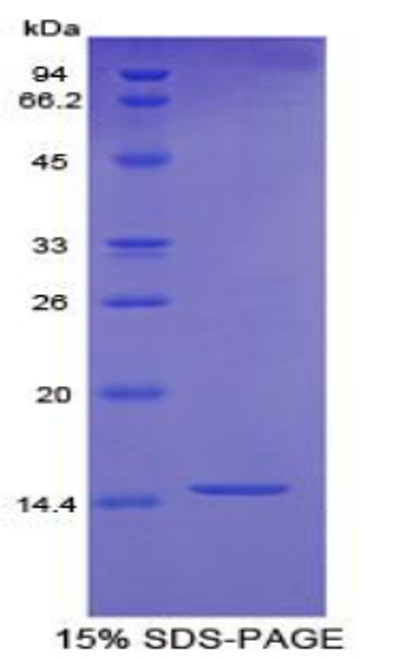Product Description
Horse Brain-derived neurotrophic factor (BDNF) ELISA Kit | AE61686HO | Abebio
Species Reactivity: Horse (Equus caballus; Equine)
Abbreviation: BDNF
Alternative Name: MGC34632; neurotrophin
Application: ELISA
Range: 31.25-2000 pg/mL
Sensitivity: 12.6 pg/mL
Intra-Assay: ≤4.3%
Inter-Assay: ≤8.2%
Recovery: 1, 02
Sample Type: Serum, Plasma, Other biological fluids
Detection Method: Sandwich
Analysis Method : Quantitive
Test Principale: This assay employs a two-site sandwich ELISA to quantitate BDNF in samples. An antibody specific for BDNF has been pre-coated onto a microplate. Standards and samples are pipetted into the wells and anyBDNF present is bound by the immobilized antibody. After removing any unbound substances, a biotin-conjugated antibody specific for BDNF is added to the wells. After washing, Streptavidin conjugated Horseradish Peroxidase (HRP) is added to the wells. Following a wash to remove any unbound avidin-enzyme reagent, a substrate solution is added to the wells and color develops in proportion to the amount of BDNF bound in the initial step. The color development is stopped and the intensity of the color is measured.
Product Overview: BDNF is a 13 kDa, 119 amino acid (aa) residue non-glycosylated polypeptide whose primary structure is conserved among all mammalian species examined. Initially synthesized as a 247 aa residue prepropeptide, the BDNF molecule is divided into an 18 aa residue signal sequence, a 110 aa residue prosequence, and a 119 aa residue mature segment.Similar to other neurotrophic factors, there is a possibility that the N-terminus is alternatively spliced, giving rise to a longer pre-prosegment (but identical mature segment) with different functional properties. As a mature molecule, BDNF is 52% identical to NGF at the amino acid level, exists as a noncovalently-linked homodimer in solution, and contains six cysteine residues that are believed to form three intrachain disulfide linkages.
Stability: The stability of ELISA kit is determined by the loss rate of activity. The loss rate of this kit is less than 5% within the expiration date under appropriate storage condition. The loss rate was determined by accelerated thermal degradation test. Keep the kit at 37°C for 4 and 7 days, and compare O.D.values of the kit kept at 37°C with that of at recommended temperature. (referring from China Biological Products Standard, which was calculated by the Arrhenius equation. For ELISA kit, 4 days storage at 37°C can be considered as 6 months at 2 - 8°C, which means 7 days at 37°C equaling 12 months at 2 - 8°C) .
 Euro
Euro
 USD
USD
 British Pound
British Pound
 NULL
NULL








